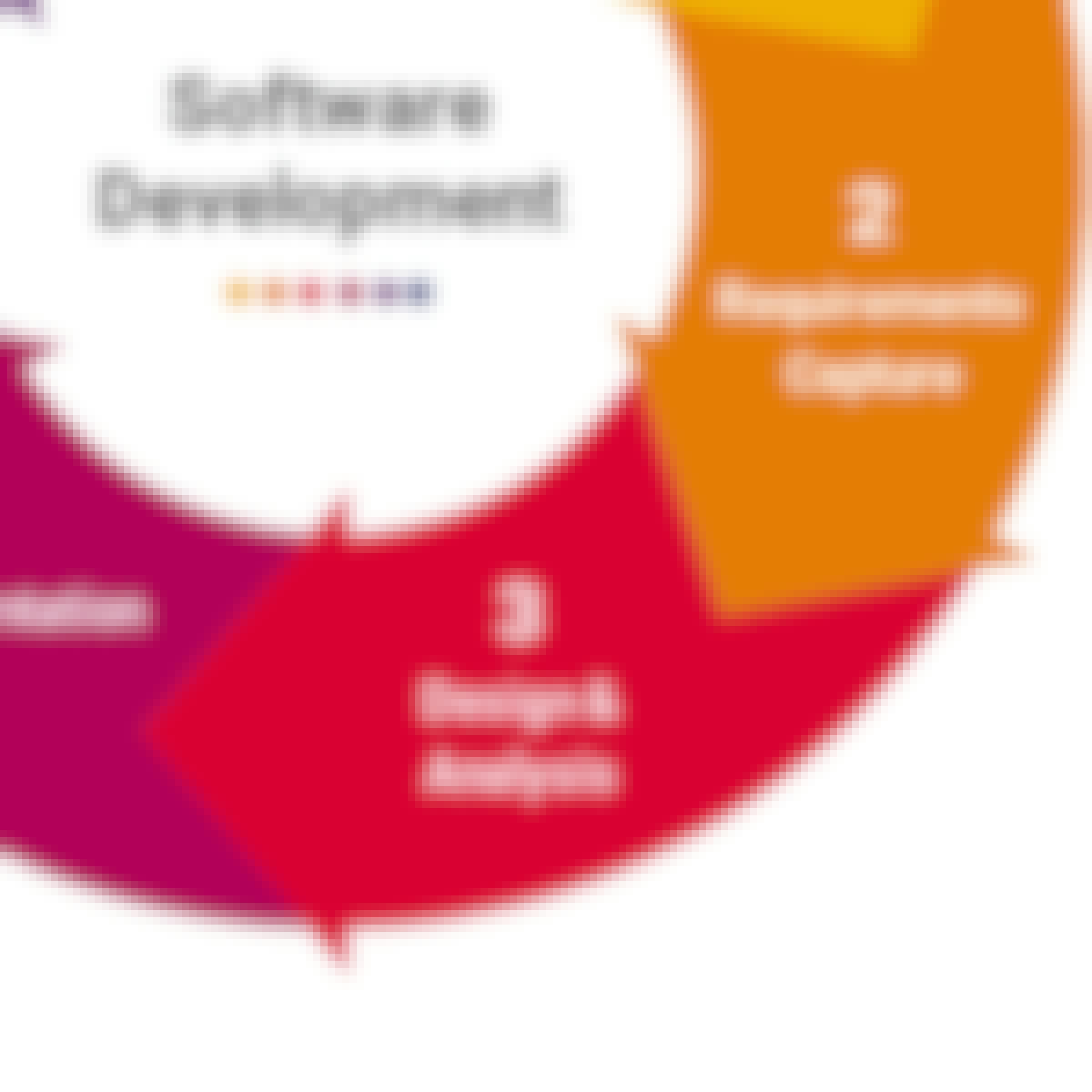Filter by
SubjectRequired
LanguageRequired
The language used throughout the course, in both instruction and assessments.
Learning ProductRequired
LevelRequired
DurationRequired
SkillsRequired
SubtitlesRequired
EducatorRequired
Results for "javascript design patterns"

The Hong Kong University of Science and Technology
Skills you'll gain: Software Design Patterns, Systems Development Life Cycle, Software Architecture, Software Development Life Cycle, Software Quality Assurance, Engineering Software, Software Design, Process Driven Development, Software Engineering, Quality Assurance, Systems Development, Systems Analysis, Software Design Documents, Object Oriented Design, Systems Design, Maintainability, Systems Architecture, Unified Modeling Language
 Status: New
Status: NewVanderbilt University
Skills you'll gain: ChatGPT, Generative AI, Artificial Intelligence, Artificial Intelligence and Machine Learning (AI/ML), Business Process Automation, OpenAI, Personalized Service, Automation, Strategic Thinking, Business Transformation, Expense Management, Creative Thinking, Technology Strategies, Productivity Software, Creativity, Business Strategy, Strategic Decision-Making, Digital Transformation, Emerging Technologies, Natural Language Processing

Skills you'll gain: Exploratory Data Analysis, Data Storytelling, Statistical Hypothesis Testing, Data Ethics, Data Visualization Software, Sampling (Statistics), Data Presentation, Regression Analysis, Feature Engineering, Data Transformation, Descriptive Statistics, Data Visualization, Probability & Statistics, Tableau Software, Data Manipulation, Probability Distribution, Statistical Analysis, Advanced Analytics, Object Oriented Programming (OOP), Data Analysis
 Status: New
Status: NewSkills you'll gain: ChatGPT, Generative AI, OpenAI, Data Ethics, Artificial Intelligence, IBM Cloud, Artificial Intelligence and Machine Learning (AI/ML), Software Development Tools, Augmented and Virtual Reality (AR/VR), Deep Learning, Image Analysis, Technical Communication, Information Privacy, Natural Language Processing, Diversity Equity and Inclusion Initiatives, Mitigation

University of Michigan
Skills you'll gain: Learning Theory, Instructional Design, Educational Materials, Experience Design, Design, Professional Development, Disabilities, Personal Development, Diversity Equity and Inclusion Initiatives, User Centered Design, Technology Solutions, Critical Thinking, Emerging Technologies

Arizona State University
Skills you'll gain: Lesson Planning, Peer Review, Teaching, Pedagogy, Curriculum Planning, Instructing, Learning Strategies, Instructional Strategies, Motivational Skills, Planning, Educational Materials, Learning Styles, Language Learning, Performance Review, Vocabulary, Design Elements And Principles, Learning Theory, Design Strategies, Lifelong Learning, Grammar
 Status: New
Status: NewVanderbilt University
Skills you'll gain: ChatGPT, Generative AI, Artificial Intelligence and Machine Learning (AI/ML), OpenAI, Artificial Intelligence, Business Process Automation, Automation, Strategic Thinking, Python Programming, Creative Thinking, Creativity, Business Intelligence, Value Propositions, Workflow Management, Software Design, Emerging Technologies, Innovation, Business Strategy, Natural Language Processing, Action Oriented
 Status: Free
Status: FreeImperial College London
Skills you'll gain: Creative Thinking, Brainstorming, Ideation, Creativity, Innovation, Resourcefulness, Curiosity, Critical Thinking, Problem Solving, Analytical Skills, Collaboration, Analysis

Copenhagen Business School
Skills you'll gain: Corporate Sustainability, Business Transformation, Environmental Social And Corporate Governance (ESG), Innovation, Business Strategies, Sustainability Reporting, Regulatory Requirements, Consumer Behaviour, Business Modeling, Systems Thinking, Strategic Partnership, Supply Chain Management, Material Handling, Waste Minimization, Product Lifecycle Management
 Status: Free
Status: FreeEindhoven University of Technology
Skills you'll gain: Electronic Systems, Electronic Components, Electrical Engineering, Wireless Networks, System Design and Implementation, Design Specifications, Simulations

Arizona State University
Skills you'll gain: Lesson Planning, Peer Review, Teaching, Pedagogy, Literacy, Curriculum Planning, Instructing, Learning Strategies, Instructional Strategies, Motivational Skills, Planning, Educational Materials, Grammar, Learning Styles, Technology Strategies, Technology Roadmaps, Design Elements And Principles, Design Strategies, Vocabulary, Language Learning
 Status: New
Status: NewVanderbilt University
Skills you'll gain: Data Storytelling, ChatGPT, Excel Macros, Excel Formulas, Microsoft Excel, Data Visualization, Spreadsheet Software, Data Analysis, Presentations, Generative AI, Artificial Intelligence, Data Cleansing, Data Import/Export, Data Integration, Productivity Software, Data Transformation, Data Validation, Creative Thinking, Creativity, Natural Language Processing
In summary, here are 10 of our most popular javascript design patterns courses
- Software Engineering: Software Design and Project Management: The Hong Kong University of Science and Technology
- Agentic AI and AI Agents for Leaders: Vanderbilt University
- Google Advanced Data Analytics: Google
- Generative AI for Educators: IBM
- Learning Experience Design: Orientation to the Profession: University of Michigan
- TESOL Certificate, Part 1: Teach English Now!: Arizona State University
- AI Agents and Agentic AI in Python: Powered by Generative AI: Vanderbilt University
- Creative Thinking: Techniques and Tools for Success: Imperial College London
- Sustainable Fashion: Copenhagen Business School
- RF and millimeter-Wave Circuit Design: Eindhoven University of Technology










